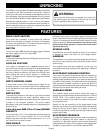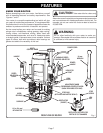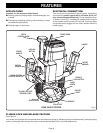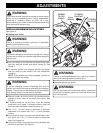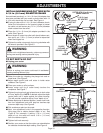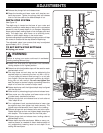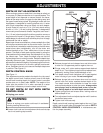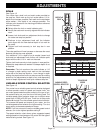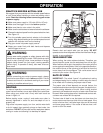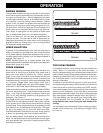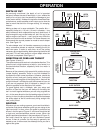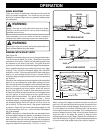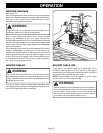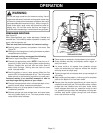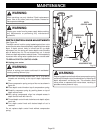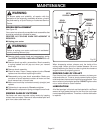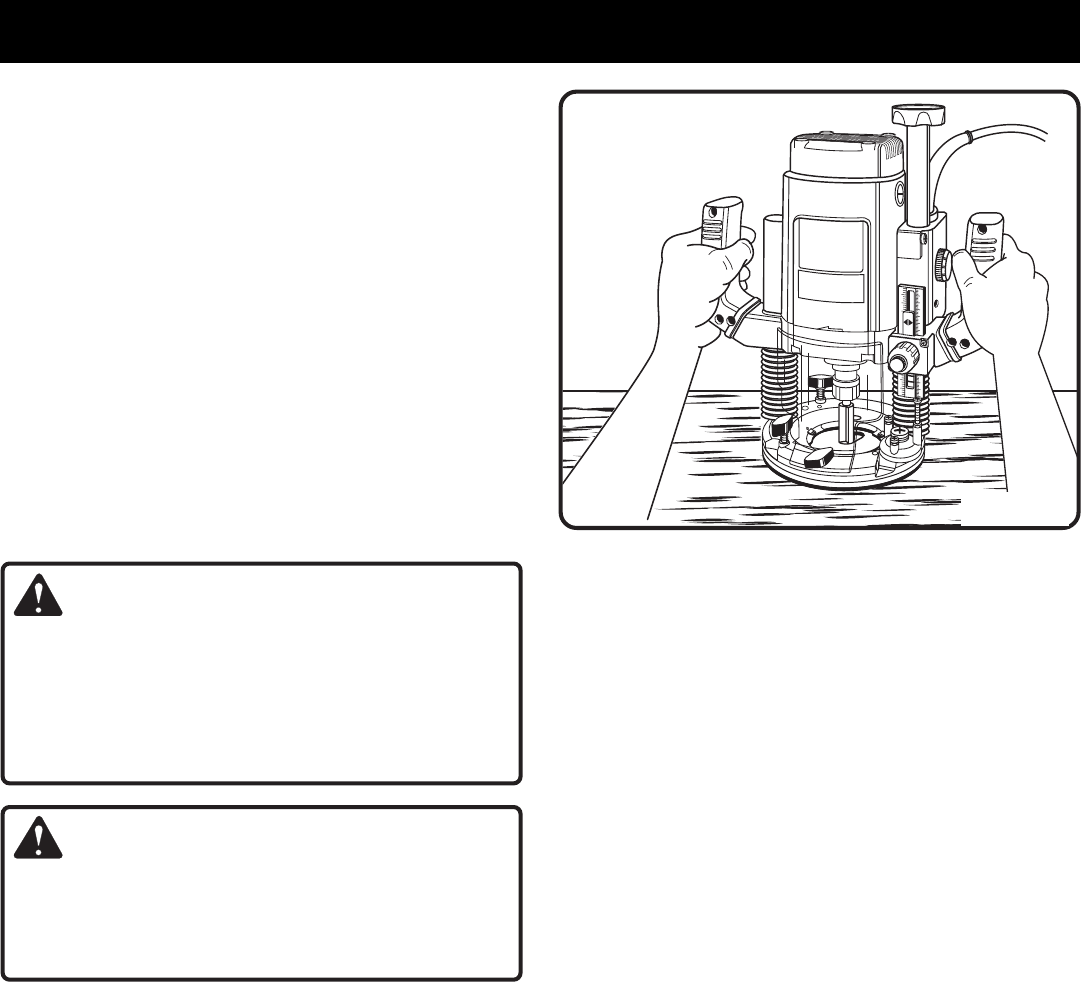
Page 14
OPERATION
PRACTICE BEFORE ACTUAL USE
We suggest that you practice with the variable speed feature
of your router before installing a cutter and making cuts in
wood. Check the following before connecting your router
to power supply:
■ Make sure power supply is 120 volts, 60 Hz, AC only.
■ Make sure the trigger is not in the lock-on position.
■ Make sure there is not a cutter in the collet.
■ Make sure the collet does not extend below the subbase.
■ Choose the desired speed from the speed selection chart.
See Figure 13
.
■ Turn the variable speed control selector to the desired
setting. Align desired setting on the variable speed control
selector with indicator mark on the housing.
■ Plug your router into power supply source.
■ Grasp your router firmly with both hands and depress
switch trigger to turn on.
WARNING:
Always wear safety goggles or safety glasses with side
shields when operating your router. Failure to do so could
result in dust, shavings, chips, loose particles or foreign
objects being thrown into your eyes, causing possible
serious injury. If operation is dusty, also wear a face or
dust mask.
WARNING:
Before connecting your router to power supply, always
check to be sure switch is not in lock-on position. Failure
to do so could result in accidental starting of your router
resulting in possible serious injury.
ROUTING
For ease of operation and maintaining proper control, your
router has two handles, one on each side of the router base.
When using your router hold it firmly with both hands as
shown in figure 14.
Before starting router, unplug it and make sure cutter is
securely tightened in collet nut and that depth of cut is
properly set.
Plug router into power supply, turn it on, and let motor build
to its full speed, then gradually plunge or feed cutter into
workpiece. DO NOT let the cutter contact workpiece before
turning on router and allowing it to develop full speed.
Remain alert and watch what you are doing. DO NOT
operate router when fatigued or under the influence of drugs,
alcohol, or any medication.
FEED DIRECTION
When routing, the cutter rotates clockwise. Therefore, you
should feed the router into the workpiece from left to right.
When fed from left to right, the rotation of the cutter pulls the
router against the workpiece. If fed in the opposite direction,
the rotation forces of the spinning bit will tend to throw the
router away from the workpiece. This could cause loss of
control of your router.
See Figure 18.
RATE OF FEED
IMPORTANT: The whole "secret" of professional routing
and edge shaping lies in making a careful setup for the cut
to be made and in selecting the proper rate of feed.
The proper rate of feed depends on several factors: the
hardness and moisture content of the wood, the depth of cut,
and the cutting diameter of the bit. When cutting shallow
grooves in soft woods such as pine, a faster rate of feed can
be used. When making deep cuts in hardwoods such as oak,
a slower rate of feed will be required.
The best rate of feed is one that does not slow down the
router motor more than one-third of its no-load speed. If the
router is fed too fast, it will take large chips out of the wood
and leave gouge marks. If the router is fed too slow, it will
scorch or burn the wood.
in
m
m
1
2
3
9
3
1
Fig. 14



